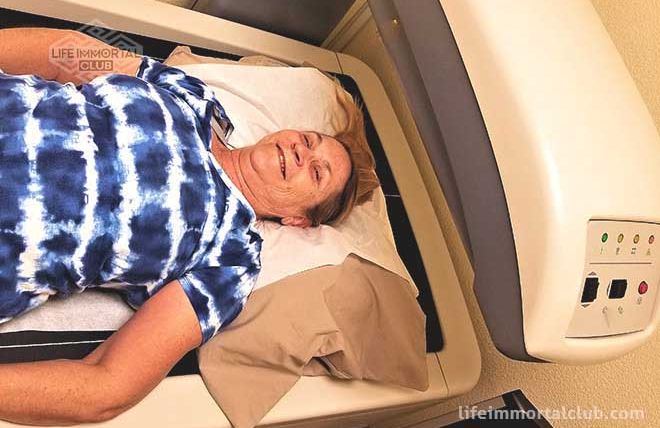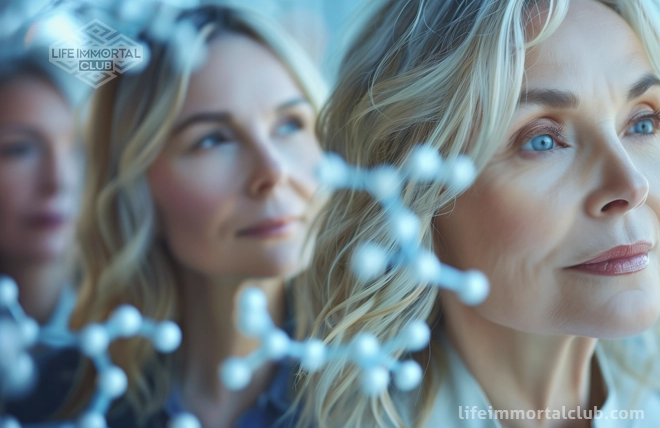Unbreakable: A Comprehensive Guide to Preventing and Treating Osteoporosis for Strong Bones and a Strong Body

Strong Bones, Strong Body: Osteoporosis Prevention and Treatment
The Importance of Strong Bones for Overall Health
Bones are the framework of our body, providing support and structure to muscles and organs. However, their importance goes beyond just providing a framework.
Bones also serve as storage for essential minerals such as calcium and phosphorus which are vital for the proper functioning of our nervous system, muscles, and heart. As we age, our bones go through a natural process of losing some density which may lead to osteoporosis.
Osteoporosis is a condition that weakens bones, making them fragile and susceptible to fractures. It is estimated that around 50 million Americans have osteoporosis or low bone mass which puts them at risk for developing the condition.
Definition of Osteoporosis
Osteoporosis is a silent disease because it often goes unnoticed until a fracture occurs. It is caused by decreased bone density or poor bone quality which results in weakened bones that are prone to fractures.
The National Osteoporosis Foundation defines osteoporosis as “a skeletal disorder characterized by compromised bone strength predisposing a person to an increased risk of fracture”. While osteopenia refers to low bone density that puts individuals at higher risk for osteoporosis, it should not be confused with actual osteoporosis.
Purpose of the Article
The purpose of this article is to provide an in-depth look into how we can maintain strong bones throughout our lifetime and prevent or manage osteoporosis. By understanding the causes behind this disease and the strategies available for preventing it, individuals can make informed decisions about their health.
This article will cover various aspects related to osteoporosis including its definition, causes, symptoms and diagnosis. We will also explore different prevention strategies such as nutrition and diet modifications along with exercise routines that can help maintain healthy bones.
Furthermore, we will examine treatment options available for individuals with osteoporosis, including alternative therapies and surgical interventions. In a nutshell, the aim of the article is to empower readers with knowledge and tools that can help them take control of their bone health, prevent osteoporosis or manage its symptoms more effectively.
Understanding Osteoporosis
Causes and Risk Factors
Osteoporosis is a condition that causes bones to become fragile, weak, and prone to fractures. It occurs when bones lose minerals such as calcium more quickly than the body can replace them, leading to a decrease in bone density. While osteoporosis can affect both men and women, it is more common in women after menopause.
There are several factors that increase the risk of developing osteoporosis, including genetics, hormonal changes, and lifestyle choices. Individuals with a family history of osteoporosis are more likely to develop the condition themselves.
Women who have gone through menopause also have a higher risk due to decreased levels of estrogen which helps protect bones. Additionally, individuals who lead sedentary lifestyles or those who smoke or consume excessive amounts of alcohol are at higher risk.
Symptoms and Diagnosis
In its early stages, osteoporosis may not cause any symptoms. However, as the condition progresses and bones become weaker, individuals may experience pain or tenderness in their bones or joints, loss of height over time due to compression fractures in the spine, or curvature of the spine (kyphosis).
To diagnose osteoporosis, doctors will typically perform a bone density test known as dual-energy x-ray absorptiometry (DXA). This test measures bone mineral density using low-dose radiation and compares it with that of young adults with healthy bones.
Consequences of Osteoporosis
The consequences of untreated osteoporosis can be severe. Fractures caused by weakened bones can occur even from simple activities such as bending over or sneezing. These fractures can have serious implications for quality-of-life including pain and loss of mobility.
The most common sites for fractures related to osteoporosis include the hip bone, spine, and wrist. Hip fractures, in particular, can be life-threatening due to complications such as infections or blood clots which can develop during hospitalization.
Additionally, fractures in the spine can lead to chronic pain and deformities such as kyphosis. Osteoporosis is a serious condition that affects millions of individuals worldwide. Understanding its causes and risk factors is an important step towards prevention and early diagnosis. If left untreated, osteoporosis can have severe consequences for an individual's health and quality of life.
Prevention Strategies
Nutrition and Diet
Maintaining a healthy diet is one of the most important strategies to prevent osteoporosis. Adequate intake of calcium, vitamin D, and other essential nutrients can help improve bone density and reduce the risk of fractures.
Daily calcium requirement is approximately 1000-1200 mg for adults over the age of 50. Foods high in calcium include low-fat dairy products, leafy green vegetables, nuts, and fish with soft bones like salmon or sardines.
Vitamin D also plays a crucial role in bone health as it helps our bodies absorb calcium effectively. The daily recommended dose for adults over 50 is around 800-1000 IU per day, which can be obtained through exposure to sunlight or vitamin D-rich foods such as fatty fish (salmon), mushrooms or fortified milk or cereal.
Exercise and Physical Activity
Regular exercise has been shown to improve bone density by stimulating the formation of new bone tissue. Weight-bearing exercises like walking, stair climbing, dancing and weightlifting are particularly effective for improving overall bone health as well as balance and coordination.
Resistance training can also help build muscle strength which indirectly improves bone strength. The duration, intensity and frequency will depend on individual needs but at least 30 minutes of moderate physical activity on most days should be targeted towards reducing osteoporosis risks.
Lifestyle Changes
Certain lifestyle factors can contribute significantly to an increased risk of developing osteoporosis- these include smoking tobacco products & consuming alcohol excessively. Smoking has been associated with reduced bone mineral density while excessive alcohol consumption interferes with the body's ability to absorb calcium effectively. Reducing alcohol intake is important- moderation implies up to one drink per day for women & up to two drinks per day for men.
Quitting smoking altogether may prove beneficial not only for bone health but for overall health as well. Engaging in stress management techniques like yoga, mindfulness and meditation can also promote a healthy lifestyle and therefore lead to better bone health outcomes.
Treatment Options
Medications for Osteoporosis
Medications are often prescribed to help prevent further bone loss or even increase bone density in those diagnosed with osteoporosis. The most commonly prescribed medications include bisphosphonates, denosumab, and selective estrogen receptor modulators (SERMs). Bisphosphonates work by slowing down the rate of bone breakdown, while denosumab targets a protein responsible for breaking down bones.
SERMs act similarly to estrogen, which can help improve bone density. While these medications have been shown to be effective in preventing further bone loss and reducing fracture risk, they do come with side effects such as gastrointestinal issues or increased risk of certain types of fractures.
Hormone Therapy
Hormone therapy (HT) is another treatment option that has been shown to increase bone density and reduce fracture risk in postmenopausal women. The therapy involves taking estrogen or a combination of estrogen and progesterone, which can help prevent the rapid decline in bone mass that occurs after menopause.
However, HT also comes with potential risks such as increased risk of breast cancer or stroke. For this reason, it is important for women considering HT to discuss the risks and benefits with their healthcare provider.
Surgery
In some cases, surgery may be necessary for those with severe osteoporosis who have experienced a fracture or other complications. One surgical option is vertebroplasty or kyphoplasty which involves injecting cement into the fractured vertebrae to stabilize it and relieve pain.
Another option is joint replacement surgery if osteoporosis has led to severe joint damage in areas like the hip or knee joints. These surgeries come with risks such as infection or blood clots but can significantly improve quality of life for those with severe osteoporosis.
There are multiple treatment options available for individuals diagnosed with osteoporosis. Medications such as bisphosphonates, denosumab, and SERMs can be effective in preventing further bone loss while hormone therapy can help increase bone density.
Surgery may be necessary for those with severe osteoporosis who have experienced a fracture or other complications. However, all treatments come with potential risks and should be discussed thoroughly with a healthcare provider to determine the best option for each individual.
Alternative Therapies for Osteoporosis: Supplementing Traditional Treatment Options
While traditional treatment options like medication and hormone therapy can be effective in treating osteoporosis, many individuals seek out alternative therapies to supplement these treatments. Alternative therapies for osteoporosis include supplements, massage therapy, and acupuncture. Supplements for Bone Health
There are a variety of supplements available that can help promote bone health, including calcium, vitamin D, magnesium, and vitamin K. Calcium is essential for building strong bones and maintaining bone density. Vitamin D helps the body absorb calcium and also plays a role in muscle function.
Magnesium helps regulate calcium levels in the body and aids in bone formation. Vitamin K is important for blood clotting but also helps build strong bones.
It's important to note that while supplements can be beneficial for overall bone health, they should not replace traditional treatment options prescribed by your doctor.
Additonally, it's important to talk to your doctor before taking any supplements to ensure they won't interact with any medications you may be taking. Massage Therapy
Massage therapy may help relieve pain associated with osteoporosis as well as improve flexibility and range of motion. Massage therapists use various techniques such as deep tissue massage or Swedish massage to target areas of pain or discomfort.
While research on the effectiveness of massage therapy specifically for treating osteoporosis is limited, some studies have shown promise. It's important to note that individuals with severe osteoporosis should avoid deep tissue massage or other vigorous forms of massage that could potentially cause injury. Acupuncture
Acupuncture involves inserting thin needles into specific points on the body to stimulate healing and reduce pain.
Some studies have shown that acupuncture may help improve bone density in individuals with osteoporosis by stimulating cells responsible for building new bone tissue.
However, more research is needed on the effectiveness of acupuncture specifically for treating osteoporosis. It's also important to note that acupuncture should not replace traditional treatment options prescribed by your doctor.
Alternative therapies can be effective in supplementing traditional treatment options for osteoporosis. Supplements like calcium, vitamin D, magnesium, and vitamin K can aid in building and maintaining strong bones.Massage therapy may help alleviate pain and improve flexibility while acupuncture may stimulate bone growth. However, it's important to talk to your doctor before trying any alternative therapies and to continue following traditional treatment options prescribed by your healthcare provider.
Living with Osteoporosis
Osteoporosis often presents significant challenges to individuals diagnosed with the condition, and it can be mentally and emotionally overwhelming. Coping strategies are essential to address the physical and emotional aspects of living with osteoporosis. One coping mechanism is staying positive.
A positive attitude can go a long way in managing osteoporosis. Engaging in fun activities such as hobbies, meditating, or listening to music can help alleviate stress and anxiety, which can worsen the symptoms of osteoporosis.
It is important for patients to approach their diagnosis with an open mind and a proactive attitude towards getting better instead of considering it as a death sentence. Another method for living with osteoporosis is staying active despite the diagnosis. Patients should always engage in physical activity unless advised by their physician not to do so. Exercises that strengthen bones and muscles are especially helpful for patients with osteoporosis; weight-bearing activities like walking, jogging, or dancing are also beneficial.
Coping Mechanisms
Coping mechanisms range from psychological interventions such as psychotherapy to relaxation techniques like mindfulness meditation that help reduce stress levels. Psychotherapy aims at providing emotional support through therapy sessions that allow patients to voice their fears or concerns about their diagnosis freely.
The therapist also guides patients on adopting practical solutions that foster better mental health. Mindfulness meditation involves focusing one's attention on an object or sensation without judgmental thoughts about it; this practice helps lessen negative emotions associated with chronic pain caused by osteoporosis; research shows that practicing mindfulness meditation improves bone density levels significantly.
Another effective coping mechanism for individuals living with osteoporosis is finding support groups; support groups offer a sense of community where people experiencing similar challenges come together and share experiences or offer advice. Support groups can help combat feelings of loneliness and isolation that often accompany chronic illnesses such as osteoporosis.
Importance of Follow-up Care
Osteoporosis is a chronic condition that requires close monitoring by healthcare professionals to maintain bone health. Follow-up care is essential for tracking and assessing treatment progress, identifying new symptoms or complications, and making necessary adjustments to the treatment plan. Regular appointments with physicians or other healthcare providers ensure that patients are adhering to their medications and lifestyle changes, which are critical in preventing further bone loss.
Follow-up care could also include checkups for other health conditions commonly associated with osteoporosis (such as fractures). These visits offer an opportunity to discuss any questions or concerns that patients may have about their condition.
Living with osteoporosis can be challenging, but there are ways to cope with the physical and emotional impact of the diagnosis. Coping mechanisms such as staying positive and active, finding support groups or engaging in psychotherapy sessions can help improve mental health outcomes.
Additionally, follow-up care is essential in managing the progression of osteoporosis effectively; this requires regular check-ups with healthcare practitioners who monitor progress towards better bone health. With these strategies in place, patients can lead a fulfilling life despite having osteoporosis.
Summary of Key Points
- Osteoporosis is a serious condition that affects many elderly individuals, and it can have severe consequences for overall health.
- Osteoporosis can be prevented through proper nutrition, exercise, lifestyle changes, and medication if necessary.
- Treatment options include medications and surgery, as well as alternative therapies such as supplements and massage therapy.
- Coping mechanisms and support groups are also important for those living with osteoporosis.
Future Directions in Research
As research on osteoporosis continues to progress, there is hope that new treatment options will become available to improve outcomes for patients. One area of research interest involves the development of new medications with fewer side effects than current options. Another area focuses on understanding how genetics may influence the risk of developing osteoporosis.
Researchers are also exploring the use of stem cell therapy to repair damaged bone tissue in individuals with osteoporosis. This approach has shown promising results in animal studies and may eventually become a viable option for humans.
Importance of Early Detection and Intervention
Early detection is crucial to preventing or managing osteoporosis effectively. Regular bone density tests should be conducted for women over 65 years old and men over 70 years old or those who have an increased risk due to other factors such as prior fractures or smoking. Intervention should begin as soon as possible after diagnosis to prevent further loss of bone density or fractures from occurring. This can include lifestyle changes such as exercise or diet modifications, medication, and monitoring by a healthcare provider.
Overall, early detection and intervention play a critical role in maintaining strong bones throughout life and preventing the negative consequences associated with osteoporosis. As healthcare providers continue to educate patients about this condition and researchers make strides in new treatment options, we can work together towards better outcomes for those affected by osteoporosis.







